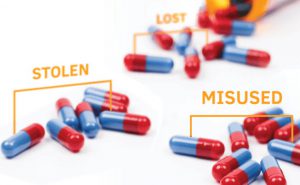Quest Diagnostics Incorporated, the world’s leading provider of diagnostic testing, information and services, today issued its annual report on U.S. worker drug use, the Quest Diagnostics Drug Testing Index™. The study includes its first state-by-state analysis of methamphetamine positives, based on more than 4.5 million urine specimens collected from the general U.S. workforce from January-December 2010, revealing that several Western and Midwestern states register dramatically higher workforce positive prevalence rates for methamphetamine than the national average. The report also shows that while efforts around the country to control availability of the highly addictive substance and educate against its use may be making progress in some areas, the drug’s attraction among U.S. workers may be moving eastward.
Among the 42 states with sufficient data to compare to the national average for positive workplace drugs tests for methamphetamine in 2010, those notably above were:
- Hawaii – 410% greater than the national average
- Arkansas – 280% greater than the national average
- Oklahoma – 240% greater than the national average
- Nevada – 180% greater than the national average
- California – 140% greater than the national average
- Wyoming – 130% greater than the national average
- Utah – 120% greater than the national average
- Arizona – 100% greater than the national average
- Kansas – 80% greater than the national average
Click here to review the complete release.
For more information about drug testing, visit our website.
 Your Privacy Choices
|
Privacy Notices
|
Terms
|
Language Assistance / Non-Discrimination Notice | Asistencia de Idiomas / Aviso de no Discriminación | 語言協助 / 不䈚視通知
Your Privacy Choices
|
Privacy Notices
|
Terms
|
Language Assistance / Non-Discrimination Notice | Asistencia de Idiomas / Aviso de no Discriminación | 語言協助 / 不䈚視通知



















Quest Diagnostics Incorporated, the world’s leading provider of diagnostic testing, information and services, today issued its annual report on U.S. worker drug use, the Quest Diagnostics Drug Testing Index™. The study includes its first state-by-state analysis of methamphetamine positives, based on more than 4.5 million urine specimens collected from the general U.S. workforce from January-December 2010, revealing that several Western and Midwestern states register dramatically higher workforce positive prevalence rates for methamphetamine than the national average. The report also shows that while efforts around the country to control availability of the highly addictive substance and educate against its use may be making progress in some areas, the drug’s attraction among U.S. workers may be moving eastward.
Among the 42 states with sufficient data to compare to the national average for positive workplace drugs tests for methamphetamine in 2010, those notably above were:
Click here to review the complete release.
For more information about drug testing, visit our website.